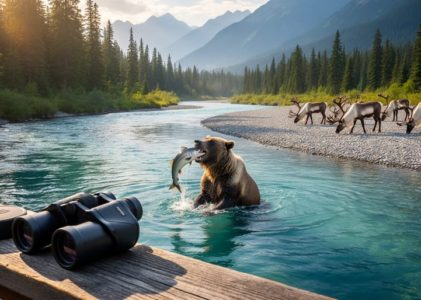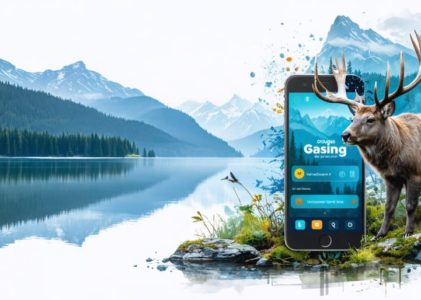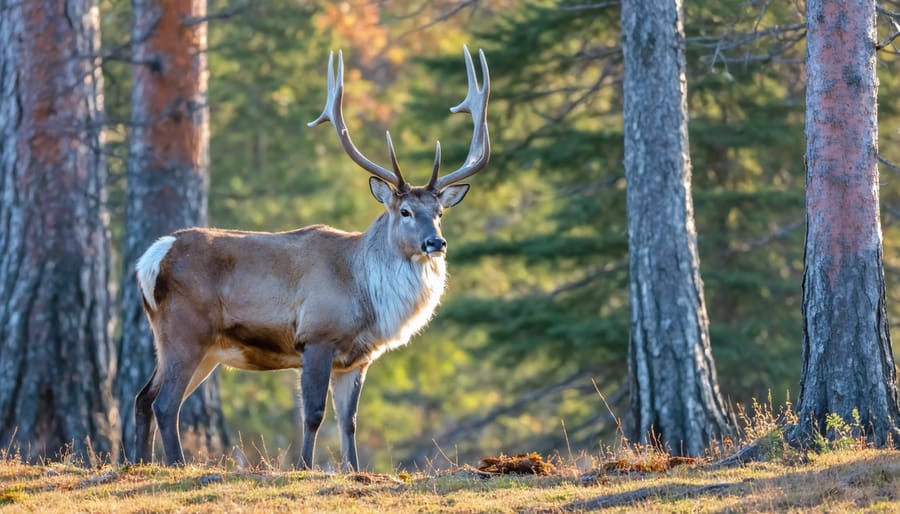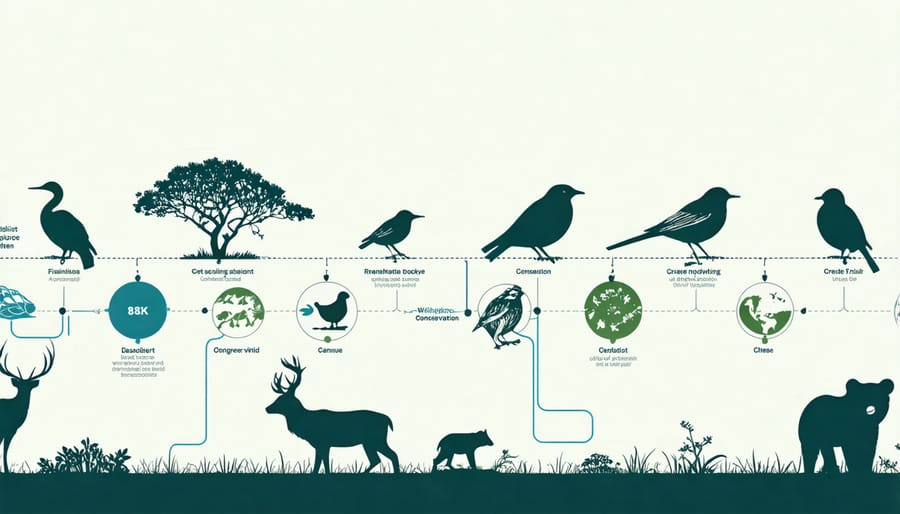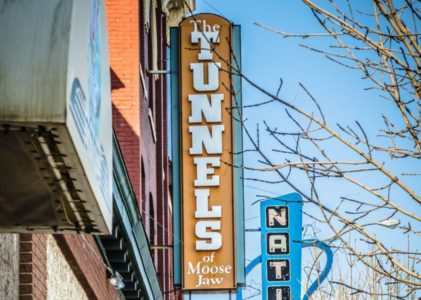Every wager placed through platforms like 5s bet and other legal sports betting operations in Canada now carries an unexpected benefit: protecting grizzly bears, caribou, and salmon habitat across our vast wilderness. Since provincial governments began legalizing single-event sports betting in 2021, a portion of gambling revenues has been channeled into conservation programs, creating an innovative funding stream that’s already making measurable differences for threatened species.
This surprising alliance between gaming entertainment and environmental protection represents a pragmatic solution to Canada’s chronic conservation funding shortfall. While traditional funding sources struggle to keep pace with habitat loss and climate challenges, sports betting revenues provide steady, predictable income for wildlife programs that previously relied solely on government appropriations and charitable donations.
The mechanism works simply: provincial gaming authorities allocate percentages of sports betting tax revenues to conservation initiatives, supporting everything from wetland restoration in Manitoba to wolf corridor protection in British Columbia. These funds complement existing conservation budgets rather than replacing them, expanding our collective capacity to address urgent wildlife needs.
For environmentally conscious Canadians, this development raises important questions about funding ethics, program effectiveness, and personal participation. Can a legalized gambling industry genuinely benefit wildlife? Which species are seeing real recovery results? And how can conservation supporters ensure these revenues translate into lasting ecological impact rather than political talking points? The answers reveal both remarkable success stories and ongoing challenges worth understanding.
The Game-Changing Link Between Betting Revenue and Conservation
Where the Money Actually Goes
When Canadians place a sports bet through legal channels, a portion of the revenue flows into provincial coffers through gaming taxes and levies. The journey from wager to wildlife protection varies by province, but the impact is tangible and growing.
In Ontario, the iGaming Ontario model channels a percentage of sports betting revenue into the provincial general fund, which then allocates resources to the Ministry of Natural Resources and Forestry. Since launching regulated single-event sports betting in 2022, Ontario has directed millions toward habitat restoration projects, including crucial wetland preservation in the Muskoka region that supports nesting loons and great blue herons. The province has also funded collar tracking programs for eastern wolves, helping researchers understand migration patterns and reduce human-wildlife conflicts.
British Columbia takes a more direct approach through the BC Wildlife Federation’s partnership with the province’s gaming commission. Revenue from PlayNow, BC’s official sports betting platform, contributes to the Habitat Conservation Trust Foundation. This funding has supported remarkable projects like salmon spawning habitat restoration along the Fraser River and grizzly bear research in the Kootenay region. One recent success story involves volunteer stream restoration teams who, funded by gaming revenue, improved over 30 kilometers of crucial salmon habitat in just two years.
Manitoba directs a portion of its sports betting proceeds to support Species at Risk recovery programs, while Quebec integrates gaming revenue into broader conservation initiatives through its Ministry of Forests, Wildlife and Parks. Though the amounts vary annually, this innovative funding stream provides conservation groups with more predictable resources for long-term planning.
The Numbers That Matter
Since Canada legalized single-event sports betting in August 2021, the financial impact on wildlife conservation has exceeded initial expectations. Provincial gaming agencies committed to allocating 5% of sports betting revenues to environmental initiatives, generating approximately $47 million for conservation programs in the first two years alone.
Ontario, Canada’s largest sports betting market, has directed over $28 million specifically toward wildlife habitat restoration projects. British Columbia followed with $11 million supporting endangered species recovery programs, while Quebec contributed $8 million to wetland preservation efforts across the province.
Early projections estimated annual contributions would reach $15-18 million nationally, but actual figures have surpassed these forecasts by nearly 40%. This unexpected windfall has enabled conservationists to accelerate critical projects that previously faced years-long funding gaps.
The funds have supported tangible outcomes: 12,000 hectares of restored caribou habitat, protection for 47 at-risk bird species nesting sites, and employment for 340 conservation workers across Canada. These numbers represent more than statistics—they tell the story of how a regulated industry can become an unlikely champion for wildlife, transforming recreational activity into meaningful environmental action that secures Canada’s natural heritage for future generations.
Canadian Species Getting a Second Chance
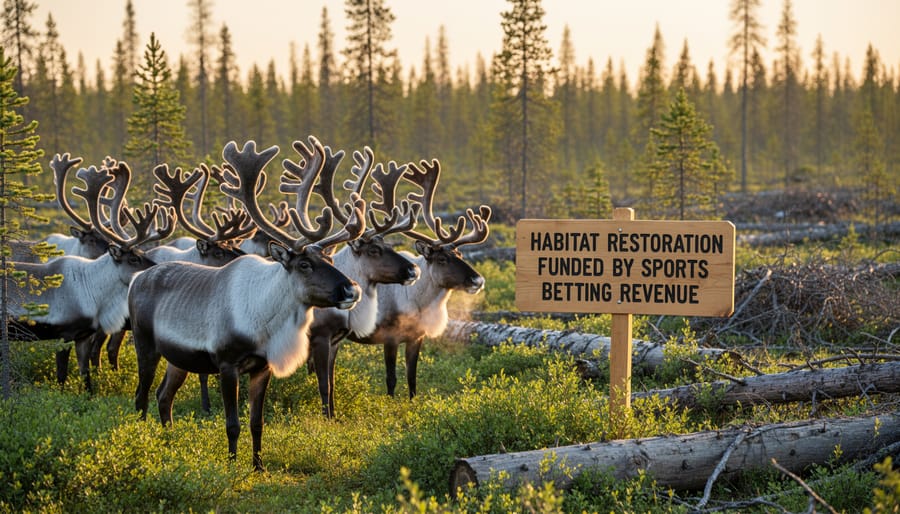
The Woodland Caribou Comeback
In Canada’s boreal forests, woodland caribou populations faced a critical decline, with habitat fragmentation pushing several herds toward the brink. Thanks to an innovative partnership between provincial gaming authorities and conservation organizations, sports betting revenue has breathed new life into these iconic northern wanderers.
Since 2022, over $8 million in betting proceeds has flowed into woodland caribou mammal recovery programs across British Columbia, Alberta, and Ontario. These funds have enabled the restoration of more than 200,000 hectares of critical caribou habitat, including the establishment of protected corridors that allow herds to migrate safely between feeding grounds.
The results speak volumes. In northern Ontario’s Slate Islands, the Lake Superior caribou herd has grown by 23 percent since habitat protection initiatives began. Conservation officers have documented increased calf survival rates, while remote camera monitoring shows caribou returning to previously abandoned ranges.
Volunteer wildlife monitors like Sarah Chen from Thunder Bay have witnessed the transformation firsthand. “Tracking these magnificent animals through restored old-growth forests reminds us what’s possible when we invest in nature,” she shares. The success demonstrates how creative funding mechanisms can deliver tangible conservation outcomes for Canada’s most vulnerable species.
Protecting Prairie Grasslands and Their Inhabitants
Canada’s prairie grasslands, once stretching endlessly across the southern provinces, have diminished dramatically over the past century. Today, sports betting revenues are breathing new life into these endangered ecosystems and their unique inhabitants. Funds channeled through provincial wildlife agencies support critical habitat restoration for species like the burrowing owl, whose Canadian population has plummeted by over 90 percent since the 1990s.
Similar to bird conservation initiatives across the country, prairie programs focus on protecting and expanding suitable grassland habitats. The swift fox, once extinct in Canada, has benefited tremendously from these efforts. Conservation teams use gaming revenues to purchase and protect native prairie parcels, install artificial burrows for owls, and work directly with ranchers to implement wildlife-friendly grazing practices.
Volunteer Sarah Thompson from Medicine Hat describes her experience monitoring burrowing owl nests as transformative. “Watching these tiny owls raise their young in protected habitat, knowing that something as unexpected as sports betting helped make this possible, really shows how creative conservation funding can work,” she shares. These grassland initiatives demonstrate that innovative funding models can reverse decades of decline for Canada’s most threatened ecosystems.

Coastal and Aquatic Conservation Wins
Canada’s coastal waters and freshwater ecosystems are experiencing remarkable wins thanks to sports betting conservation funds. The critically endangered North Atlantic right whale, with fewer than 350 individuals remaining, has become a priority recipient of this innovative funding stream. Conservation dollars support crucial initiatives including acoustic monitoring systems that track whale movements in the Gulf of St. Lawrence, helping reduce fatal ship strikes and fishing gear entanglements.
Freshwater species are equally benefiting from this funding model. The Atlantic salmon, once abundant in Maritime rivers, now receives support for habitat restoration projects that remove barriers to migration and improve spawning grounds. In British Columbia, efforts to protect Pacific salmon populations have gained momentum through betting revenue allocations, funding stream assessments and water quality monitoring programs.
Marine biologist Dr. Sarah Chen, who works with harbour seal populations in Nova Scotia, shared her experience: “These funds allowed us to expand our tagging program by forty percent, giving us unprecedented data on seal behavior and health. We’re finally understanding how climate change affects their food sources.”
The ripple effects extend beyond individual species, supporting entire ecosystems that countless marine and freshwater creatures depend upon for survival.
Conservation Organizations Making It Happen
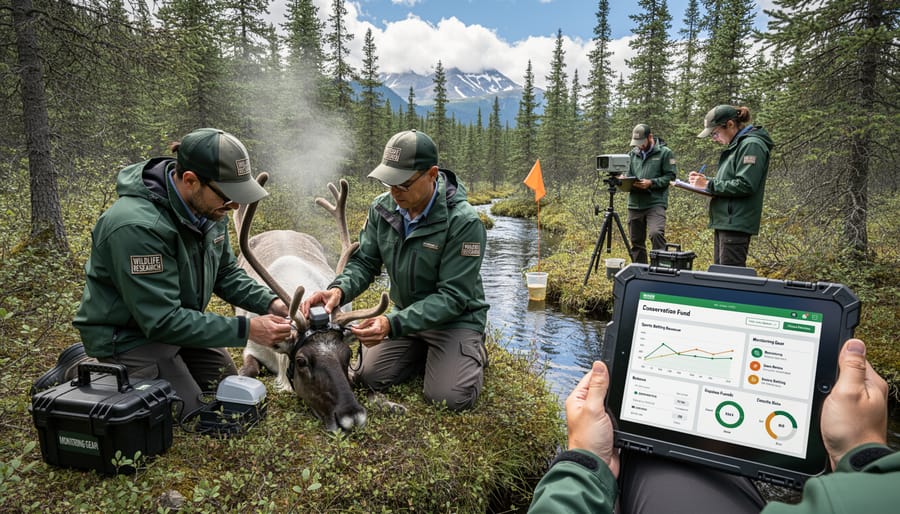
From Wagers to Wildlife: A Day in the Field
Sarah Mitchell pulls on her waterproof boots as dawn breaks over the wetlands near Lake Ontario. As a habitat restoration coordinator, she’s witnessed firsthand how sports betting revenue has transformed conservation work in Ontario. “Three years ago, we were struggling to maintain basic monitoring programs,” she explains, checking her equipment. “Now, thanks to gaming revenue allocations, we’ve restored over 200 hectares of critical wetland habitat.”
Today’s work focuses on tracking the return of Blanding’s turtles to newly restored marshlands. The funding has allowed her team to install protective fencing, create nesting sites, and employ two full-time field technicians instead of relying solely on seasonal volunteers. “We can actually be proactive now rather than reactive,” Sarah notes, pointing to a turtle basking in the morning sun.
The impact extends beyond equipment and salaries. Gaming funds have supported community education programs, bringing school groups to witness conservation efforts up close. Local Indigenous knowledge keepers now work alongside scientists, incorporating traditional ecological wisdom into modern restoration techniques.
As Sarah carefully documents turtle movements on her tablet, she reflects on the unexpected alliance between recreational gaming and wildlife protection. “When people place bets on their favourite teams, they probably don’t think about turtles,” she smiles. “But their activity is helping us save species that have called this land home for millions of years. That connection matters.”
The Controversy and the Critics
While sports betting revenue offers promising opportunities for wildlife conservation, this funding model raises legitimate questions that deserve thoughtful consideration. Critics point out several concerns that wildlife enthusiasts and conservation supporters should understand.
The primary ethical question centers on whether conservation programs should depend on gambling revenue—an industry that can create social and economic challenges for some Canadians. Some conservation advocates worry about the message this sends, particularly when problem gambling affects vulnerable communities. Additionally, there are environmental concerns about gambling operations themselves, including energy consumption from digital platforms and physical infrastructure impacts.
Financial sustainability presents another consideration. Unlike traditional conservation funding through government allocations or private donations, gambling revenue fluctuates based on betting activity. Economic downturns, regulatory changes, or shifts in consumer behavior could significantly impact available conservation funds. This unpredictability makes long-term planning for species recovery programs challenging.
Some wildlife organizations express concern about potential conflicts of interest. Could conservation groups become reluctant to criticize gambling industry practices if they rely heavily on these funds? This question highlights the importance of maintaining transparent governance structures and diverse funding streams.
However, supporters counter that conservation funding has always come from imperfect sources, including hunting licenses and resource extraction fees. They argue that redirecting existing gambling revenue—rather than creating new betting specifically for conservation—represents pragmatic problem-solving. The reality is that many successful Canadian wildlife recovery stories, from woodland caribou habitat restoration to wetland preservation, have benefited from these innovative funding partnerships.
The key lies in maintaining balanced funding portfolios, ensuring accountability, and keeping conservation science—not revenue sources—at the center of wildlife protection decisions.
How You Can Amplify the Impact
While sports betting revenue creates new pathways for wildlife conservation funding, your direct involvement can multiply these efforts significantly. Canadian conservation organizations need more than financial support—they need passionate advocates and hands-on volunteers to ensure species like the woodland caribou and swift fox continue their recovery.
Consider volunteering with organizations conducting wildlife surveys or habitat restoration projects. The Nature Conservancy of Canada regularly seeks volunteers for tree planting initiatives, invasive species removal, and citizen science projects that monitor biodiversity. These experiences connect you directly with the landscapes and creatures benefiting from conservation funding, creating meaningful stories you’ll carry forward.
Direct donations to provincial wildlife trusts amplify government conservation programs. Organizations like the Alberta Conservation Association and Ontario’s Fish and Wildlife Conservation Act fund operate transparently, ensuring your contribution supports specific projects. Many accept monthly donations starting at minimal amounts, making consistent support accessible to everyone.
Advocacy matters tremendously. Contact your provincial representatives requesting continued support for wildlife conservation funding mechanisms. Share success stories on social media, educating your network about innovative conservation financing. Support businesses committed to environmental stewardship, demonstrating that consumers value ecological responsibility.
Practice everyday conservation actions like creating pollinator gardens, properly disposing of waste in natural areas, and respecting wildlife corridors. Every action contributes to healthier ecosystems supporting vulnerable species.
Remember, sports betting revenue provides crucial funding, but lasting conservation success requires communities rallying together. Your voice, time, and commitment strengthen the collective effort protecting Canada’s remarkable natural heritage for future generations.
The partnership between sports betting revenue and wildlife conservation represents an unexpected yet powerful alliance that’s reshaping how we protect Canada’s natural heritage. When recreational activities generate millions in revenue that flow directly into habitat restoration and species recovery programs, everyone wins—from the Atlantic puffin colonies in Newfoundland to the spirit bears of British Columbia’s coastal rainforests.
This innovative funding model demonstrates that conservation solutions can emerge from surprising places. Sports enthusiasts placing wagers on their favorite teams probably never imagined their activity would help reintroduce swift foxes to the prairies or fund rescue operations for injured raptors. Yet that’s exactly what’s happening across provinces that have channeled gaming revenues into environmental protection.
The success stories we’ve explored—from woodland caribou habitat preservation to peregrine falcon recoveries—prove this approach works. But sustainable conservation requires more than passive funding streams. It needs your active participation. Whether you choose to volunteer with local wildlife rehabilitation centers, donate directly to conservation organizations, or simply spread awareness about these programs, every action matters. Canada’s wildlife faces genuine challenges, but with creative funding partnerships and community engagement, we’re building a future where both nature and people thrive together.


